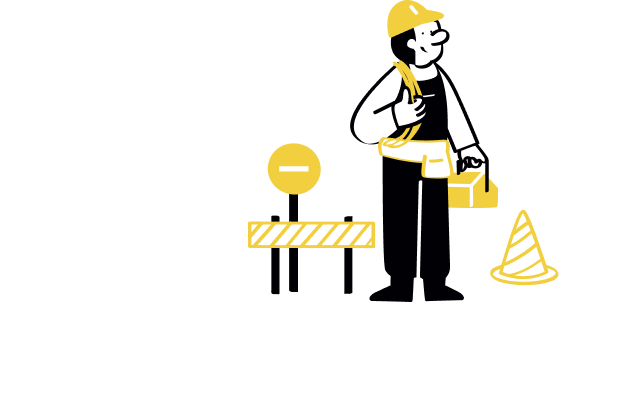Harsh? Maybe. But, every successful founder I know will nod.
Hey, Arjun here.
You’ve been sold a lie.
If someone’s telling you that you can “have it all” as long as you balance your work and life… one of two things is true:
- They’ve never built anything harder than a Pinterest board.
- They’re selling you a $999 online course about balance while quietly working 90-hour weeks.
You Can’t Go All-In When You’re Half-and-Half
Ask any top founder you know, and they’ll tell you: work-life balance is a fantasy.
These successful founders are obsessed, unreasonable, and occasionally unbearable, and that’s why they win.
And I’m not talking from the sidelines.
At doola, we’ve helped 10,000+ entrepreneurs across 175+ countries start and scale their dream e-commerce businesses.
But, getting here took more than long hours and dedication.
It took obsession. And that’s why “balance” never made sense to me.
There’s a line they don’t teach at Harvard Business School or Wharton:
Anything worth doing is worth doing in excess.
Moderation is the only thing worth doing in moderation.
Let me show you exactly what I mean, and why this shift matters if you want outsized results.
Why “Balance” Is the Wrong Framework
When people say “balance,” they usually picture a scale or balance beam. On a scale, if you add weight to one side, the other side rises. That sounds fine… until you realize what it means in real life:
- Spend more time on work → lose time for life.
- Spend more time on life → lose ground on health.
In other words, it forces you into a trade-off mindset. One thing only grows at the expense of another.
For most people, that might be fine. But in entrepreneurship, the goal isn’t to keep things perfectly even, it’s to create momentum, breakthroughs, and compounding wins. And that rarely happens by evenly distributing your energy.
So If “Balance” Holds You Back, What’s the Alternative?
I think about my life like a flywheel, not a balance beam. With a flywheel, every push builds on the one before it, creating momentum that grows stronger over time.
That’s what integration looks like. My work and life aren’t two sides fighting for attention, they feed each other.
Instead of asking, “What do I need to cut back on to make room for this?” I ask, “How can I design my life so that one thing actively makes the other better?
The Integration Playbook: Health × Work × Life — You Don’t Have to Pick Two
There’s a popular belief that you can only have two of the three: health, work, and life.
I think that’s complete nonsense.
For example: A lot of people tell me, “I don’t have time to exercise.”
Here’s how I see it: I don’t work out just for the 60 minutes I’m in the gym. I do it for the impact it has on the other 23 hours of my day. With exercise:
- I sleep better.
- I have more energy and stamina.
- I’m less irritable.
- I’m more confident.
Those benefits spill directly into my work. When I feel sharper, calmer, and more energized, I perform better as a founder.
And here’s the real mindset shift:
The days I least feel like exercising are the days it matters most.
Why? Because those are usually the days I’m stressed, tired, or mentally foggy, exactly when I need that boost the most.
Stacking: The Secret Weapon
I exercise while working.
And, sometimes, I’ll hop on the stair stepper and use that time to reply to messages or emails.
That way, exercise isn’t just fueling the rest of my day, it’s literally happening alongside my work.
This is the difference between a “balance” mindset and an “integration” mindset.
Balance says, I can either work or work out, but not both at the same time.
Integration says, Why not design it so I can do both, and have each make the other better?
Once you start thinking in terms of integration, you’ll see opportunities everywhere. For example:
- If you love reading? Pick books that make you better at your craft, so your downtime doubles as professional development.
- If you travel often? Use layovers and flights to brainstorm ideas, draft content, or connect with peers in your industry.
- If you commute daily for work? Turn it into a mobile classroom with podcasts and audiobooks.
The point I’m trying to make here is simple: Stop asking, “What do I have to give up?” Start asking, “How do I make these things fuel each other?”
When you start thinking this way, you will stop making trade-offs and start finding ways for one activity to multiply the value of another.
This is where “moderation is the only thing worth doing in moderation” comes back into play.
But, You’re Going to Face This: The Double Standard Around Obsession
And here’s something you will notice quickly when you start living this way: society treats this level of dedication very differently depending on the arena.
In sports, obsession is celebrated. Michael Phelps trained 7 days a week for 7 years, that’s 2 extra days per week.
104 extra days per year, and 728 extra days compared to swimmers who took weekends off.
The result? 8 gold medals in Beijing.
Arnold Schwarzenegger also did something similar in bodybuilding.
While most people trained once a day for 2.5 hours, he trained 5 hours a day for 15 years, stacking two sessions instead of one. The result? 7 Mr. Olympia titles.
In athletics, we call this commitment.
In business, we call it workaholism.
That’s the cultural double standard I want you to ignore totally!!
Because if you’re building something meaningful, that same level of integration and dedication is not a flaw. It’s your competitive advantage.
Why I Choose Integration Over Balance
This is why I say I treat work like a sport. My arena isn’t a swimming pool or a gym, it’s my laptop, the partnerships I’m building, and the marketing campaigns we’re running.
That’s where I train, compete, and push for wins every day.
So yes, it’s okay not to chase “balance.”
If you’ve found something worth going all-in on, your craft, your business, embrace the obsession.
But, just do it with integration, not burnout.
My Three Biggest Takeaways
1. Balance is the wrong framework. Outsized results require obsession.
2. Operate like a flywheel, not a scale. Stop splitting energy between “work” and “life.” Make each push strengthen the other.
3. Stack for compound wins. Pair activities so one fuels the other. Exercise while working, learn while commuting, until progress feels inevitable.
Your Turn!
What’s your take on work–life balance?
Think I’m glorifying chaos? Think I need a vacation?
Either way, drop your strong opinions (loosely held or strongly held). I promise I won’t get offended… unless you say pineapple belongs on pizza. Then we’re gonna have words:)
-Arjun!
P.S. Ready to stop balancing and start integrating? Make sure your business foundation is built for obsession, not moderation. That’s where doola comes in.










